. . .
. . .
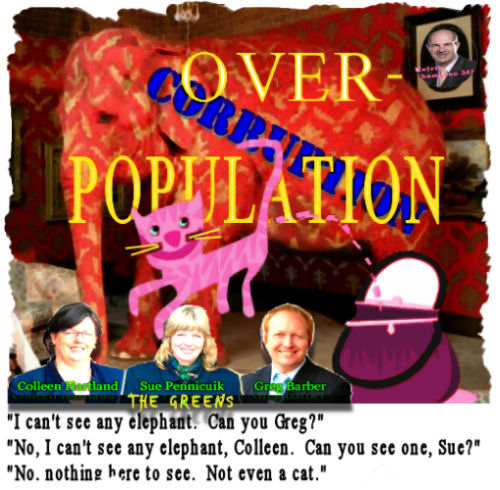
Environmentalists might expect Green MLC Greg Barber, to back another environmentalist, Kelvin Thomson, rather than supply quotes that could make him out unfairly to be racist. Wedge Politics we don't need from Mr Barber MLC who represents the Northern Metropolitan Region of Melbourne in the Legislative Council at State level, which Kelvin Thomson represents in the Lower House at the Federal level. What's going on? Are the Greens for real?

Population and Environment and the Greens
Over the years I have had conversations with people about the riddles in the Greens' strangely contradictory environmental policies and their mysterious priorities. Yet there is something of the hearty gym mistress and the scout master about them that inspires us, Charlie-Brown-like, to trust them again and again at the polls. We think, they must mean well, or that they are better than the rest, or ...
Lassie come home
Recently someone said to me that maybe they are just out there to confuse us. Are they, he suggested, really working with the Libs and Labs and Big Media, as a kind of border collie, to keep us sheep from straying too far from the farm? The dog looks friendly and competent. It's cute. We tend to trust it because it doesn't actually own the farm. But it works for the farmer.
During the past two weeks my uncertainty has been overtaken by a feeling of déjà vu.
Wedge Politics we don't need; Mr Barber plays the race-card
Firstly, I read an article in the [growthist] Melbourne Times (Fairfax media), "Welcome to Australia - Now that's enough," by Bianca Hall, (Wed.3 Feb, 2010, p.4.).
The logic of this article is amazingly contrived and reads like an excuse to cite Greg Barber of the Greens apparently slurring the motives of Kelvin Thomson's 'Population Reform' as racist in a most unfair way:
'Mr Thomson argues net overseas migration should be dramatically cut from 2007-08 rate of 213, 461 to 70,000 migrants. To slow down the birth rate, Mr Thomson would cut family tax benefits to new recipients who had more than two children and redirect the money to education and workplace training.
Australian Bureau of Statistics data shows fertility rates are higher for Australian women born in largely Muslim countries, including Turkey and northern African countries. Almost 30 per cent of people in Mr Thomson' electorate were born in non-English-speaking countries.
State Greens MP Greg Barber said the plan threatened to target Muslim families.
"Whether Kelvin understands it or not his policy selectively targets predominantly Muslim people and punishes them for having that third child," Mr Barber said. "We know what gets birth rates down - the empowerment of women, with contraception, access to education and participation in the workforce."'
Frankly I was gobsmacked and furious. You might expect the developers to try something like this, or the Libs, but a Green? You never know, however, when there is a logical explanation, so I decided to write to Mr Barber himself and ask for it. I sent the following on 24-2-2010:
"Dear Greg,
I must congratulate you on your statements in parliament about water reproduced here about bulk water entitlements as well as on your stand against disempowering councils.
I have been a little shocked however to read you as quoted in the article I have reproduced below from the Melbourne Times.
It looks like the worst kind of wedge politics.
1. I would like to know whether you were correctly cited in this article.
2. [name withheld] tells me that you may have been cited out of context - if so, could you explain a little please?
3. This is what the article makes you look as if you are doing, in my opinion:
- trying to knock out ALP competition
- or doing the ALP a favour by playing the race card against someone who is leading the battle for the environment and democracy against overdevelopment, overpopulation, by tagging them with an unfair race-card where the (extremely corrupt and unfair) ALP may not dare to do so itself
- playing to a voting sector which is identifyable as muslim
- stimatising muslims specifically as overly productive of children, uneducated etc
- playing wedge politics
- maybe preparing a seat in the Labor party for yourself
I hope to hear that none of this is true and that you are instead cooperating as much as possible with Mr Thomson, who has shown great courage and leadership.
By the same token, if there is something unfair going on between the two of you and you were reacting, I am sympathetic to an explanation there.
I am trying not to make judgements without full inquiry.
I know how fraught politics and environmental movements are with this kind of thing.
Yours for reform in democracy, environment, population, land use planning and energy policy,
Sheila Newman"
Strange silence from Mr Barber
I never received a reply from Mr Barber, although I spoke to a person at his office several times and exchanged emails with that person, and was led to assume I would at any moment receive a reply. (See below for a very brief response to another voter.) I made it very clear that I was dead serious in seeking an explanation and also that I was absolutely furious that someone was apparently trying to pull the racist card to shut up Australia's perhaps single most courageous, ethical, effective and environmentally literate politician - an ALP long-stayer who was standing up for democracy, despite his party. I said that I would write an article on the subject and so it was important for him to defend himself.
Save the Bush Rally on 24 February
The same morning I wrote to Mr Barber, I travelled to the Save the Bush Rally which took place on the steps of Melbourne Parliament. It was here that I finally lost patience with the Greens.
Speakers included Sue Pennicuick, Greens MLC, Rosemary West, of the Green Wedges, Colin Long, Greens Upper House Candidate, Damon Anderson, of Coomoora Reserve, and Gillian Collins, of the Pines Flora and Fauna Reserve. (Were all of them prospective candidates?) All made speeches about how development was being pushed through by Mr Brumby's government and how this was threatening bushland and how the Greens would provide more public transport.
Complicit Silence on how Overdevelopment has been politically contrived
No scheduled speaker mentioned why more roads or public transport are necessary. The silence on how their necessity had been politically contrived was absolutely deafening. The Greens' failure to expose how the Government is driving the overpopulation it is using as an excuse to force undemocratic development only protects this gigantic dystopic rort.
Sadly, not one Green said anything to the effect of, "We will expose this dishonesty and try to stop the overpopulation of Melbourne."
I know that Gillian Collins and Rosemary West are fully aware of the population growth corporate connection. Yet only one woman, Mara from Banyule, even mentioned that the bush is threatened by population growth. All the honour of the day for honesty and relevance goes to her. She was not even on the written Agenda. She should have been writing it.
The 'green' silence from the rest of them on the government elephant-in-the-room push for overpopulation seemed nothing short of shameful cowardice or cynical complicity. The population cat is well out of the bag, yet it seems that the Greens, of all parties, want to stuff it back in again - at the peril of our wildlife and democracy.
Why? What have they got to gain by protecting the bad guys?
I was furious that I had travelled from an outer suburb and ruined my day for more profitable pursuits only to hear a line-up of wanna-be-politicians using a captive audience to monger motherhood statements which would mostly sit happily on the billboards of new estates and the websites of corporate water-speculators. Many of those assembled in support of the speakers were battle-scarred environmental fighters who remained quiet while the glorified clichés were trotted out for the television cameras. Some dedicated naturalists and ecologists held banners and filmed the event, all of them waiting for some leadership.
They got nothing.
A trial of patience; an abuse of supporters' time
When Sue Pennicuick self-congratulatingly asked the crowd who they were going to vote for (meaning the Greens), an angry spectator called out, "Kelvin Thomson!" There was a murmur of approval from the long-suffering audience.

When Sue Pennicuick self-congratulatingly asked the crowd who they were going to vote for (meaning the Greens), an angry spectator called out, "
Kelvin Thomson!"

Another spectator handed round stickers with "Say No to Melbourne at 5 Million" and someone else was distributing leaflets exposing the identities of organisations that push population growth, which included numerous developers and the Victorian Government with its site, "www.liveinmelbourne.com.au". The audience gratefully accepted the leaflets.
There was no-one else there, apart from the speakers, who wanted to keep the lid on the scandal of the population-growth lobby and the government's role in it. A brilliant opportunity was lost to educate the press on the steps and the pedestrians watching from the other side of Spring Street about why the government is corrupt and how the government pushes population in cahoots with the developers, then makes laws to force Victorians to accommodate the interests of this group. (See the Brumby government's links with the Property Council of Australia and the Live in Victoria Government website to attract immigrants at "Living in a Destruction Zone" and Minister Justin Madden's increasingly barefaced attempts to overturn any democratic restraint on the government's development despotism.)
Political corruption in Australia
I rode home on the same train as one of the wildlife activists. On that train there was also a man who had just published a dictionary of Australian political terms. He was a born and bred ALP member and I asked him if he had ever heard of Labor Resources or Labor Holdings. He hadn't. I told him about them. It seemed to me that a faint glint of horror animated his misty eyes for a moment, but he quickly suppressed it.
"They all do it", he replied, like a long-suffering adult on the antics of teenagers. I half expected him to add, "But they will grow out of it."
Yes, all the parties do it. "It" is the use of holding companies for donations which are then declared as coming from the holding companies rather than from their many corporate donors. This is a problem but it is the amount and the kind of assets that the ALP holds at state and Federal level plus their political power and their demonstrated abuse of it which is frightening even to the Liberal-National Party.
I tried to describe how the scale of the corrupt system was beyond any before and now grotesquely magnified by the ALP's dominance over every parliament in Australia. "They are nothing like the Labor Party is supposed to be anymore," I added.
"Oh, but they're better than the alternative," he intoned, reciting his true believer catechism, with a smug smile.
"It's like a religion," said the onlooking wildlife activist. "They are brainwashed from birth."
Politics as religion
She is right. For many people, politics is the same as a religion. You just don't question the church that you were born to: Labor or Liberal: each is better than the alternative.
Or, if you're a bit rebellious, there is the alternative alternative religion - The Greens.
But it seems to me now that they are all different brands selling the same thing. They are all selling overpopulation to the masses, but each of them is selling a different brand. The Labor Party is selling overpopulation as economic growth. The Liberals would be selling it this way but they cannot out-do the ALP at the moment. The Greens are selling overpopulation as Public Transport and the Socialist Alliance is selling it as bicycles. But they are all trying to sell it to us. Like Mr Madden and Mr Brumby and Mr Rudd, they aren't really interested in democracy and what we, the electorate think. They are all seeking niches within the territory defined by the corporate growth lobby.
Mainstream Media role in our loss of democracy
For many years now the extent of this collusion has been kept safely away from public knowledge by the commercial and the public media in Australia. Indeed it looks to me as if the commercial media - notably the Murdoch media, but including the Fairfax media - have been able to shape the policies and and promote the people who have come to form our useless political parties and the corrupt ideology of material progress.
The structure of print, television and radio media has permitted ownership in a few hands which have dominated public information and allowed the entrenchment of corporate interests over democratic rights. For me it is frankly impossible now to see the difference between the Government and the commercial Property, Banking and Media groups (all interchangeable themselves), especially with Stephen Mayne's uncovering of Labor Party investments cultivated with Wayne Swann and Kevin Rudd working for Wayne Goss whilst in opposition in Queensland. Yes, Mayne's investigations were published in the mainstream, but the mainstream doesn't connect the big dots and it won't effectively publicise any alternative parties or changes to the system which might combat the rot.
The situation is like the one in the 16th century, where the Holy Roman Empire had evolved from the Roman Empire and controlled kings, public ideology and institutions. The situation seemed utterly hopeless until the rise of a new technology - printing.

Who will fight the Evil Empire again?
In the 16th century Martin Luther nailed the 95 theses to the Church door at Wittenburg. Soon copies were printed and spread all over Germany.
Unfortunately, with the discovery of technologies for smelting iron directly with coal, new kinds of institutions arose - those of capitalist corporations. The corporations built towns and re-organised people as anonymous cogs, with loyalty to employers overwhelming loyalty to family and friends, isolated from any true community or personal independence. Gradually the corporations were able to dominate human institutions all over again, under the ideology of 'Progress', (See for instance, "Courier-Mail beats up on public for complaining about cost of 'progress'"), ironically taken from protestant values.
Things may be changing again, however. Today the 'common people' - as long as they can read and write and have access to computers - may be able to take back power from the Dark Towers (to use Tolkien's ever-useful terminology for the rise of corporate control) via a new technology - and that is the Internet.
It seems however that we should not rely on the Greens to challenge the dark commercial hegemony of the overpopulation and development lobby.
If Australians cannot place their faith in the Greens, recently some real dissidents have arrived and posted something new on the church doors of the Internet: Kelvin Thomson - a brave leader in waiting for the Labor Party or for a new party or a man who may lose ALP-preselection for his courage and hence could eventually run for the Senate on Mr Barber's turf; the Stable Population Party, the New Australia Party, and the Animal Justice Party.
I will be happy to be shown to be wrong and anyone who feels misrepresented by this article is very welcome to post an article in reply or to comment. I am happy to publish any response from Greg Barber. I will be more than happy to eat every word of criticism here of Greens and speakers at the rally if only I receive an explanation. Candobetter.org is a free press and we welcome true debate.
See also: Greens support Madden's Bad Law VC 71 in black week for Victoria, Australia of 11 Oct 10, "Tasmanian Greens and the terror of coalitions" of 24 Mar 10 on Online Opinion and related discussion forum.





 We look at Dr Katharine Betts's latest graph of ABS statistics on the ratio of working to dependent in Australia, noting that it is both untrue and discriminatory to imply that the 'Aged' are by far the biggest group of 'dependents.' In relation to the graph, we also look at the role of land-use planning and the social division of work in industrial society in creating financial dependencies where none previously existed. We note that established financial and institutional investment in the post-war industrial-contractual model makes it inflexible and resistant to changes in economic feedback, but that change it must as fossil fuels deplete. Left to their own devices, Australians would probably return to the human default social organisation around kin and place, which is flexible and low cost. This will only become possible, however, with cheaper land and an economic system which permits increasing relocalisation and more flexible use of land than the current plans for packed appartments and dense dormitory-suburbs anticipate.
We look at Dr Katharine Betts's latest graph of ABS statistics on the ratio of working to dependent in Australia, noting that it is both untrue and discriminatory to imply that the 'Aged' are by far the biggest group of 'dependents.' In relation to the graph, we also look at the role of land-use planning and the social division of work in industrial society in creating financial dependencies where none previously existed. We note that established financial and institutional investment in the post-war industrial-contractual model makes it inflexible and resistant to changes in economic feedback, but that change it must as fossil fuels deplete. Left to their own devices, Australians would probably return to the human default social organisation around kin and place, which is flexible and low cost. This will only become possible, however, with cheaper land and an economic system which permits increasing relocalisation and more flexible use of land than the current plans for packed appartments and dense dormitory-suburbs anticipate.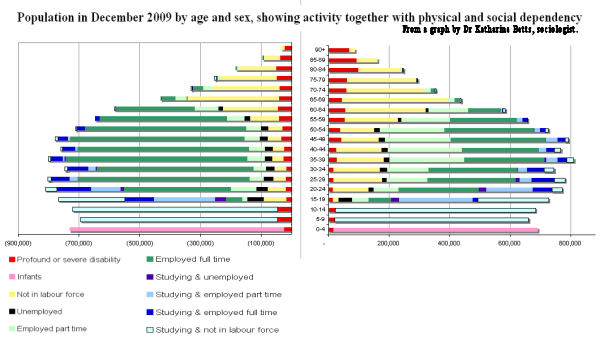

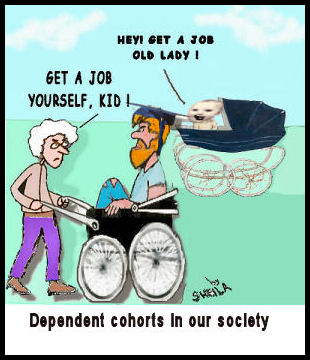


 Report on the Federation Square (Victoria, Australia) Population Forum on 23 April 2010, where Mark O'Connor debated Marcus Spiller.
Report on the Federation Square (Victoria, Australia) Population Forum on 23 April 2010, where Mark O'Connor debated Marcus Spiller. 
 Republished here to give background to Sheila Newman's remarks in her debate with Steve Bracks on the Jon Faine show 19-4-2010. You can
Republished here to give background to Sheila Newman's remarks in her debate with Steve Bracks on the Jon Faine show 19-4-2010. You can 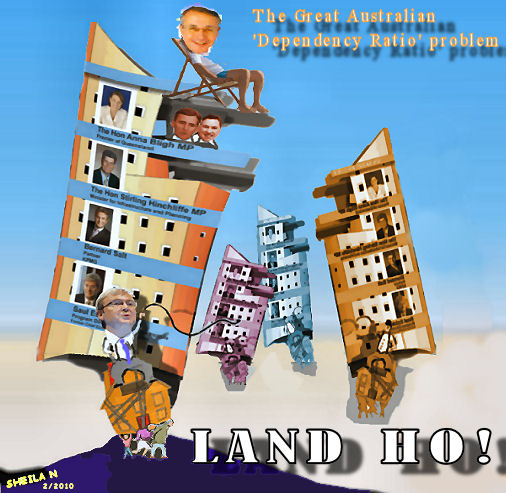
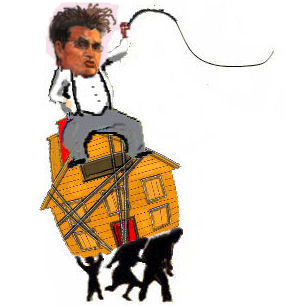
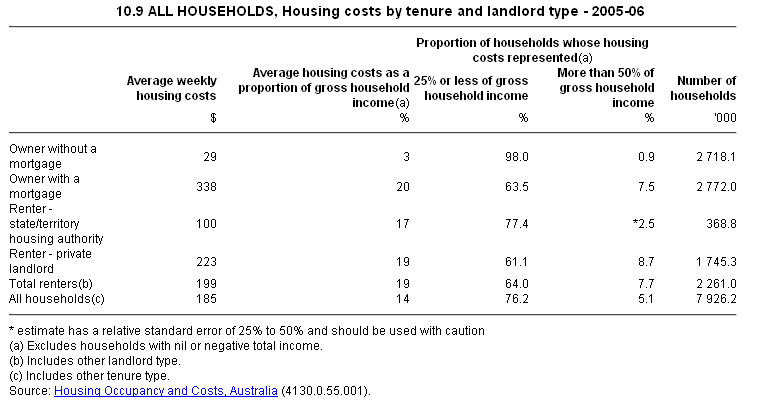
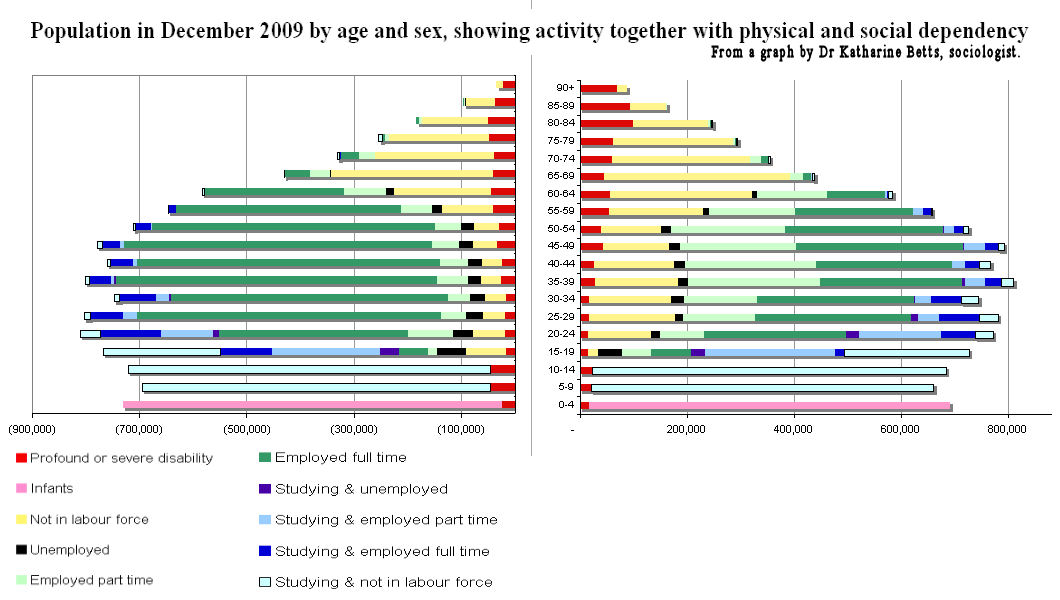



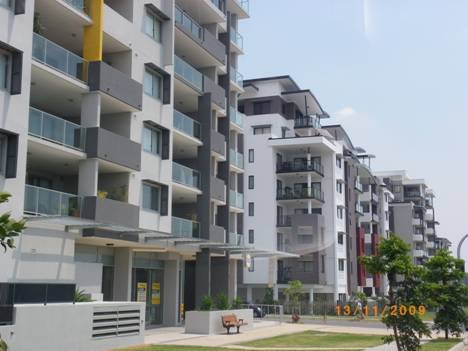
 This important statement from the Public Health Association of Australia came out in November last year but has been overlooked. It should be emphasised that the Public Health Association does not make press releases like this lightly. The entire document can be downloaded
This important statement from the Public Health Association of Australia came out in November last year but has been overlooked. It should be emphasised that the Public Health Association does not make press releases like this lightly. The entire document can be downloaded 



 May 5th 2010 - St Kilda and South Melbourne ALP Branches present POPULATE AND/OR PERISH: Are our migration numbers right or wrong?
May 5th 2010 - St Kilda and South Melbourne ALP Branches present POPULATE AND/OR PERISH: Are our migration numbers right or wrong?


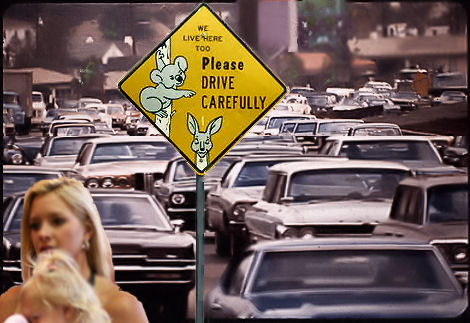
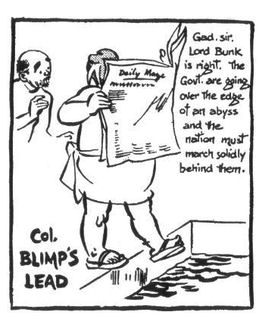 (Illustration: For more on Colonel Blimp see "Notes" [1])
(Illustration: For more on Colonel Blimp see "Notes" [1])








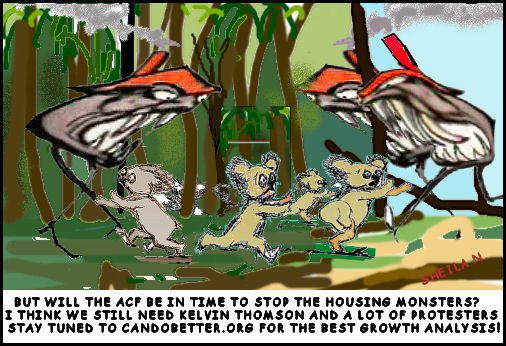
 Message sent to growthsummit[at]premiers.qld.gov.au on Tue, Mar 23, 2010 at 1:57 PM by Daniel Boon
Message sent to growthsummit[at]premiers.qld.gov.au on Tue, Mar 23, 2010 at 1:57 PM by Daniel Boon
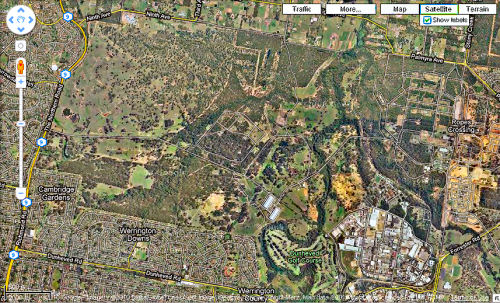 Google aerial photo of ADI Site giving an idea of size. Obviously it is surrounded by suburbs. Humans have not been denied species representation here, but, if this site is taken away, they will be denied their natural right to access natural ammenity and wild environment, which we should all be able to do, without compromising it. (Ed.)
Google aerial photo of ADI Site giving an idea of size. Obviously it is surrounded by suburbs. Humans have not been denied species representation here, but, if this site is taken away, they will be denied their natural right to access natural ammenity and wild environment, which we should all be able to do, without compromising it. (Ed.) 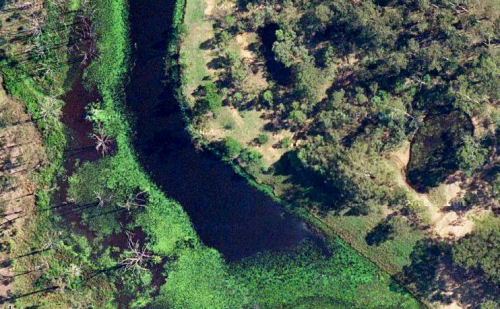 Aerial detail of water body at part of the site.
Aerial detail of water body at part of the site.



Recent comments